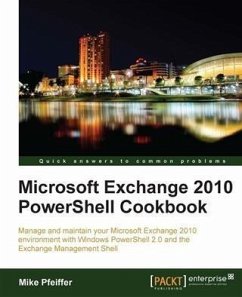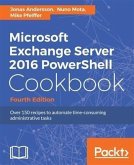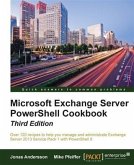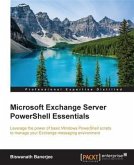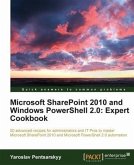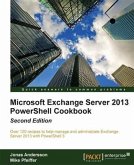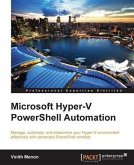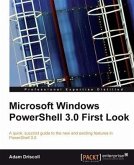In DetailMicrosoft Exchange Server 2010 is a complex messaging system with many features. In order to ease the burden on IT administrations, Exchange 2010 supports a management architecture built on Windows PowerShell 2.0, called the Exchange Management Shell. Using this management architecture, administrators can gain more efficiency then ever by automating routing tasks through PowerShell scripts and one-liners that save time and eliminate errors.This focused practical cookbook will show you how to manage and maintain your Microsoft Exchange Server 2010 environment with Windows PowerShell 2.0 and the Exchange Management Shell. It provides recipes for solving common scripting tasks and problems based on real-world scenarios.The book is full of practical, immediately usable task-based recipes that will enable you to manage and maintain your Microsoft Exchange 2010 environment with Windows PowerShell 2.0 and the Exchange Management Shell. It starts with key PowerShell concepts that lay the foundation for the scripting examples used throughout the book. You will then move on to common Exchange Management Shell tasks, enabling you to get connected to servers, run reports, and automate tasks. The book then takes you on a deep dive into topics such as Managing Recipients, Managing Mailboxes, Distribution Groups and Address Lists, Mailbox and Public Folder Databases, Client Access Servers, Transport and High Availability, amongst others.ApproachThis book is written in a cookbook-style format and provides practical, immediately usable task-based recipes that show you how to manage and maintain your Microsoft Exchange Server 2010 environment with Windows PowerShell 2.0. Each chapter of the book is written so that it can be used as a desktop reference, or it can be read from beginning to end, allowing you to build a solid foundation for building scripts in your Exchange environment.Who this book is forThis book is for messaging professionals who want to learn how to build real-world scripts with Windows PowerShell 2.0 and the Exchange Management Shell. If you are a network or systems administrator responsible for managing and maintaining Exchange Server 2010, then this book is for you. The recipes in this cookbook touch on each of the core Exchange 2010 server roles and require a working knowledge of supporting technologies including Windows Server 2008 or Windows Server 2008 R2, Active Directory, and DNS. This book covers the latest additions to Exchange Server 2010 including Service Pack 1. A basic understanding of Exchange Server 2010 and Windows PowerShell 2.0 is highly recommended.
Dieser Download kann aus rechtlichen Gründen nur mit Rechnungsadresse in A, B, BG, CY, CZ, D, DK, EW, E, FIN, F, GR, HR, H, IRL, I, LT, L, LR, M, NL, PL, P, R, S, SLO, SK ausgeliefert werden.

